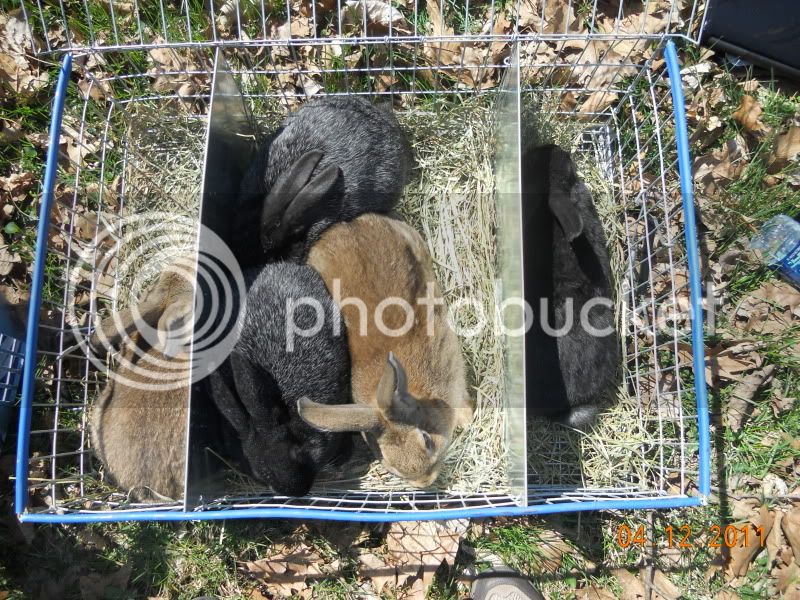Lowstorm
Well-known member
So I currently have
1 champagne d'argent buck
1 flemish rew doe
1 champ Jr doe
1 champxflem Jr doe
I'm taking in a French lop and a lop x mutt, they're unsexed until I get them home and flip them. Probably the lop is a doe. The cross is a broken black, probably rex x French lop.
At what age do you start mixing it up more and retiring/selling/processing out the purebreds? I'm easily feeding my family of four (sometimes 6) off one or two buns a meal. But I know if I stopped producing the half's they'd start getting meatier with less bones. I have the champs for the silvering and the two new ones will be adding color to the colony.
My thoughts are to keep the flem til fall, get one more litter. If one of the new ones is a buck phase out the purebred champ buck this fall also. I'd have one purebred champ doe, which will be okay if she produces good. Maybe keep the champ back just in case she doesn't produce well and ends up like her mother?
Then, the flemxchamp are not silver at all. No ticking even. I was hoping for it. Of course if both the new ones are does there will be 3/4 champ, and they may or may not silver. Along with the new does possibly making silvered...
Anyway, long rant over... I want spotted silvers. Or at least silver ticking. How many years out am I for that? And should I keep the buck even if I get a broken buck who may throw silver brokens with the champ doe? I know that right now I'm getting good growth at 12 weeks.
1 champagne d'argent buck
1 flemish rew doe
1 champ Jr doe
1 champxflem Jr doe
I'm taking in a French lop and a lop x mutt, they're unsexed until I get them home and flip them. Probably the lop is a doe. The cross is a broken black, probably rex x French lop.
At what age do you start mixing it up more and retiring/selling/processing out the purebreds? I'm easily feeding my family of four (sometimes 6) off one or two buns a meal. But I know if I stopped producing the half's they'd start getting meatier with less bones. I have the champs for the silvering and the two new ones will be adding color to the colony.
My thoughts are to keep the flem til fall, get one more litter. If one of the new ones is a buck phase out the purebred champ buck this fall also. I'd have one purebred champ doe, which will be okay if she produces good. Maybe keep the champ back just in case she doesn't produce well and ends up like her mother?
Then, the flemxchamp are not silver at all. No ticking even. I was hoping for it. Of course if both the new ones are does there will be 3/4 champ, and they may or may not silver. Along with the new does possibly making silvered...
Anyway, long rant over... I want spotted silvers. Or at least silver ticking. How many years out am I for that? And should I keep the buck even if I get a broken buck who may throw silver brokens with the champ doe? I know that right now I'm getting good growth at 12 weeks.

























































